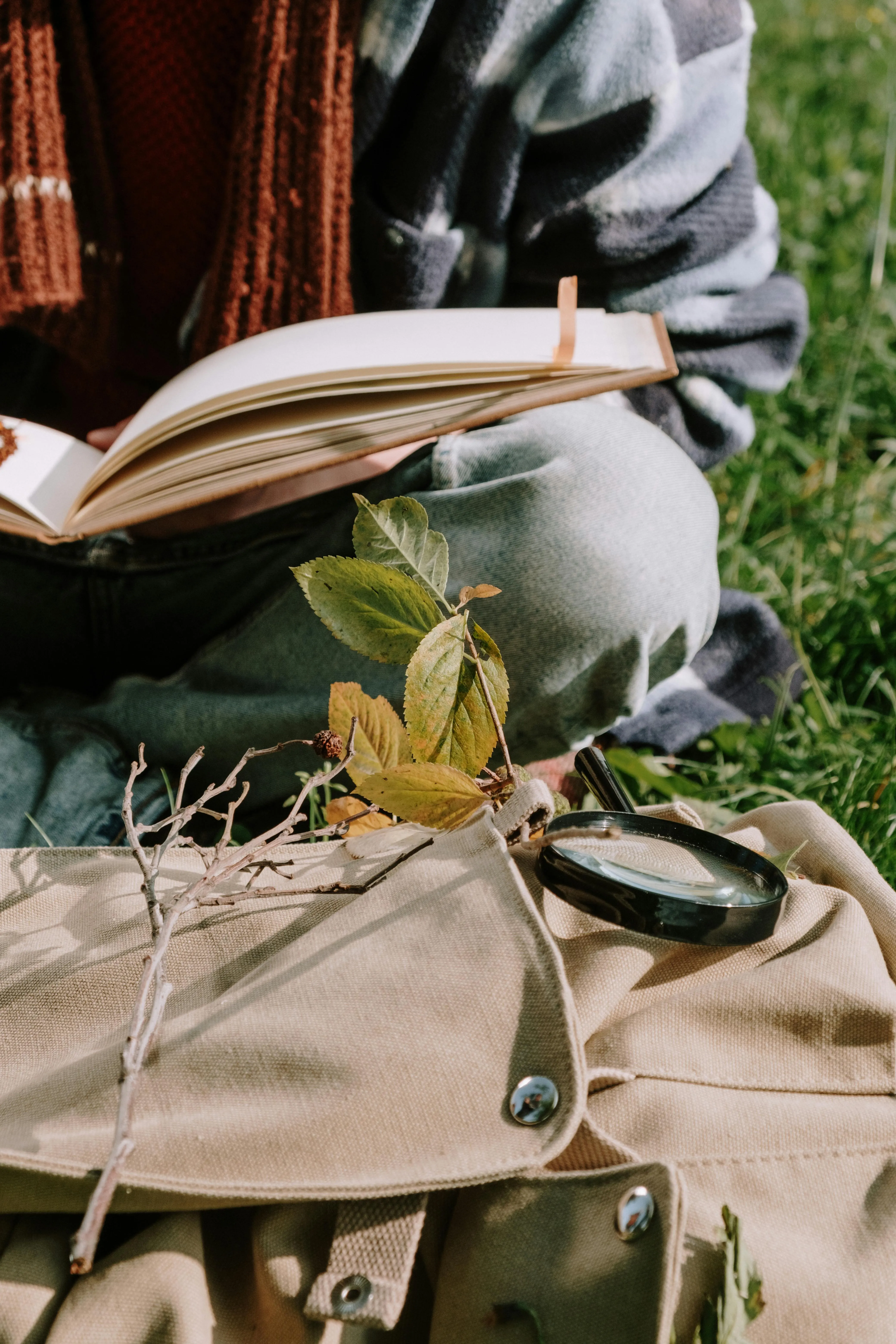
Be a Land Steward.
Sign up for Greenhouse Gases -
a weekly-ish newsletter that will teach you the science behind regenerative gardening, with action steps to help you make a difference in your backyard.

Sign up for Greenhouse Gases -
a weekly-ish newsletter that will teach you the science behind regenerative gardening, with action steps to help you make a difference in your backyard.
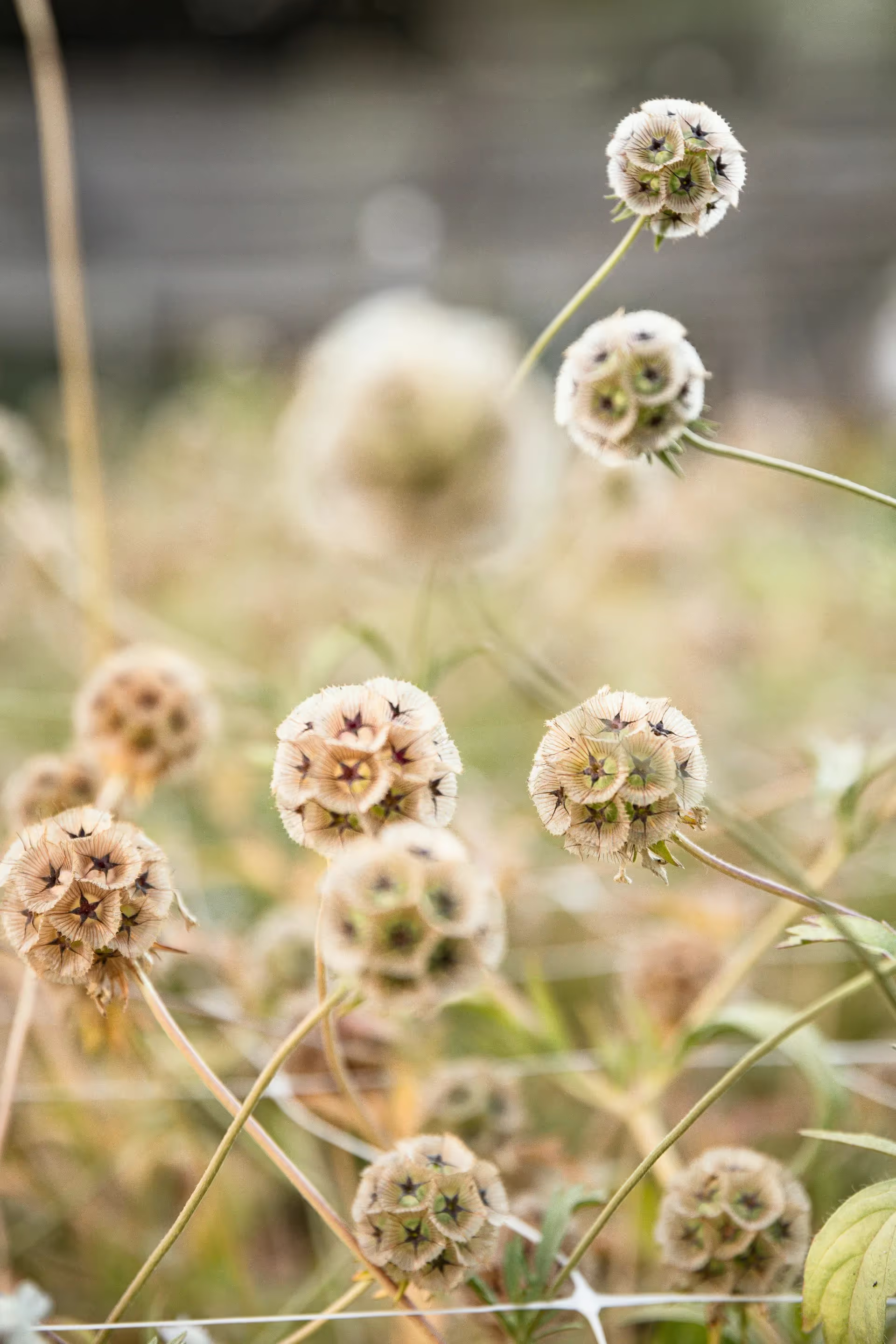
Plant Names:
Botanical Name:
Growing Habit:
Days to Maturity:
-Uprising Organics, Kew, RHS,
Dried Scabiosa, also known as Starflower or Paper Moon, adds a striking geometric touch to gardens and floral arrangements.
The flower starts as a unique pincushion-like structure before evolving into a spherical dodecahedron/icosahedron-shaped globe, making it perfect for drying and preservation.
In this article, I'll take you through my personal journey of growing and preserving Starflower Scabiosa. From seed sowing to the final drying process, I'll share practical tips, tricks, and insights that can help you grow this plant successfully and create sustainable home decor with beautifully preserved flowers.
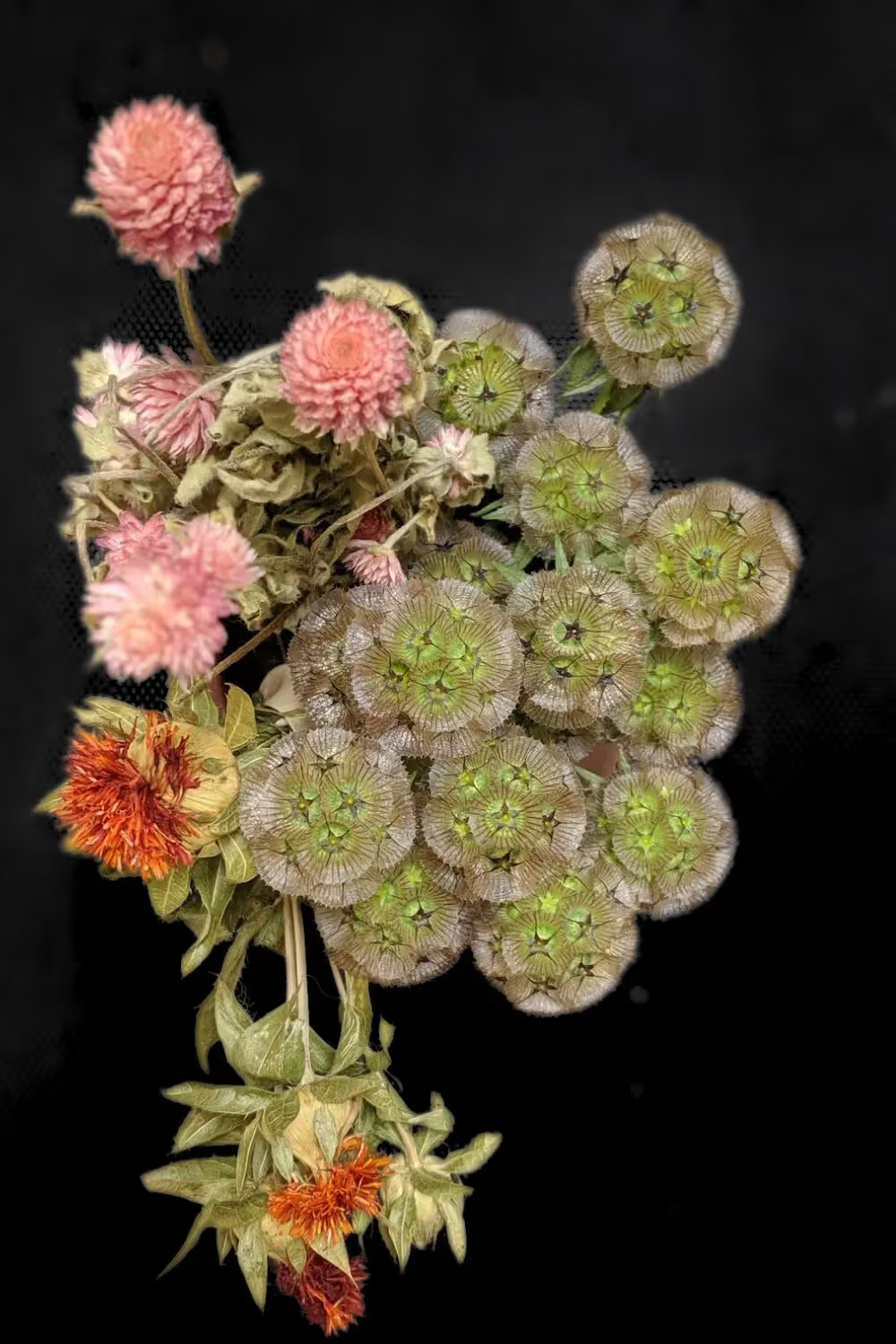
While searching seed companies for versatile plants that serve as pollinators and craft materials, I discovered Paper Moon Scabiosa. This was my first experience with a scabiosa-type plant, leading me to explore the entire genus.
The fascinating blooms of the stellata species act as landing pods for bees and butterflies. It's really easy to grow and requires no special treatment for drying, so it’s ideal for beginners looking to create dried flower arrangements.
Unique Characteristics of Paper Moon Scabiosa

Before diving into planting Scabiosa, there are several considerations to keep in mind:
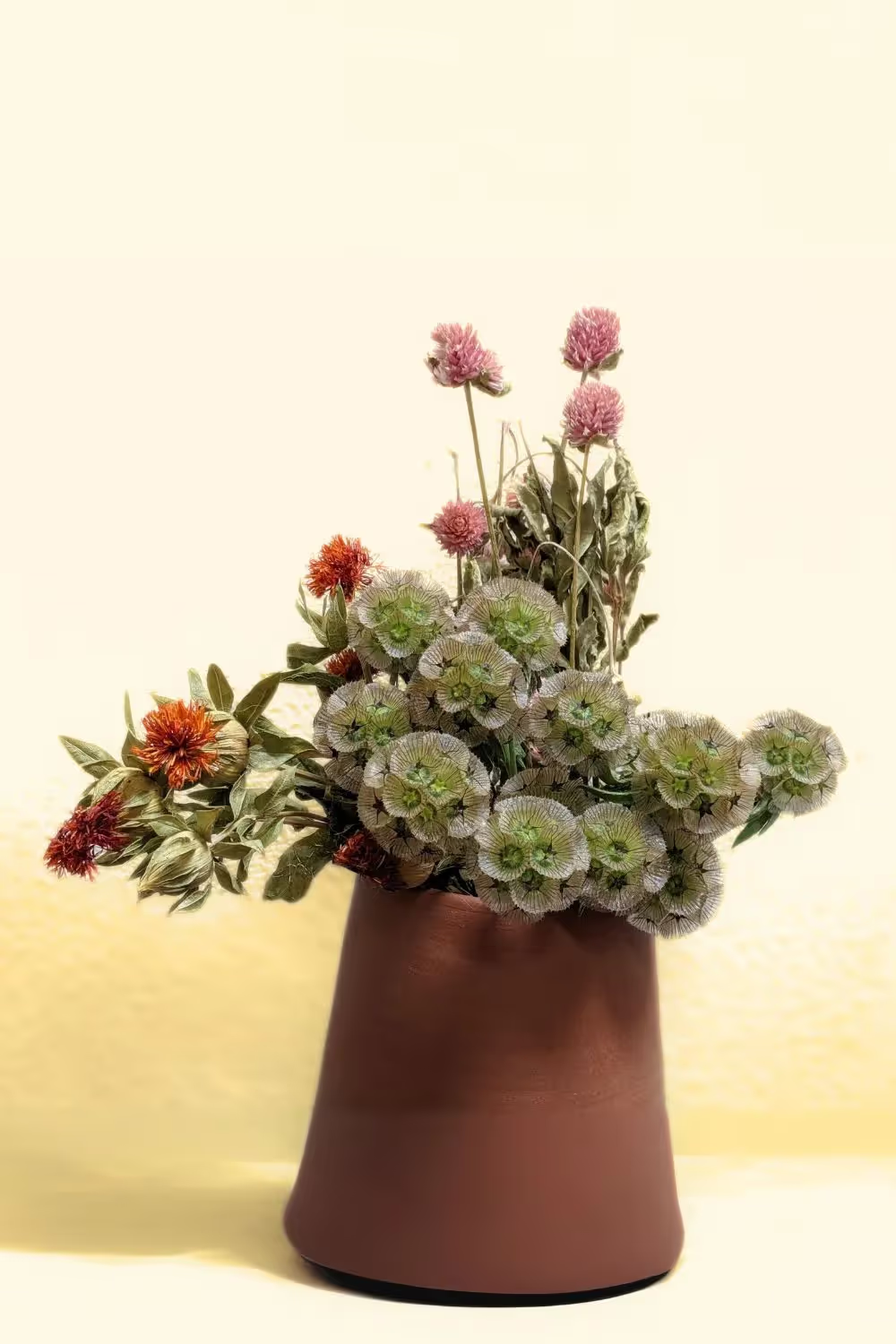
1. Sowing the Seeds
I sowed the seeds indoors in seed cells in March, a few weeks before my last spring frost. It's crucial to keep the soil consistently moist during germination. Seeds require no special treatment, so they should germinate with ease. They can also be direct sown after last frost - just be sure to water the area daily until you see sprouts.

2. Germination and Seedling Stage
As the plant germinates and grows, it will start out with its leaves first. Once the plant reaches about 6 inches in height, its water requirements decrease significantly. I water mine once a week at this stage.

3. Bloom Stage
Don't despair if your starflower looks more like a funky pincushion flower and not like a drumstick seedpod at first. This is totally normal. Plants will stay in this stage of growth for a week or two. It may be helpful to support your plants so that they don't droop all over the place, but I like the wild look that creates.
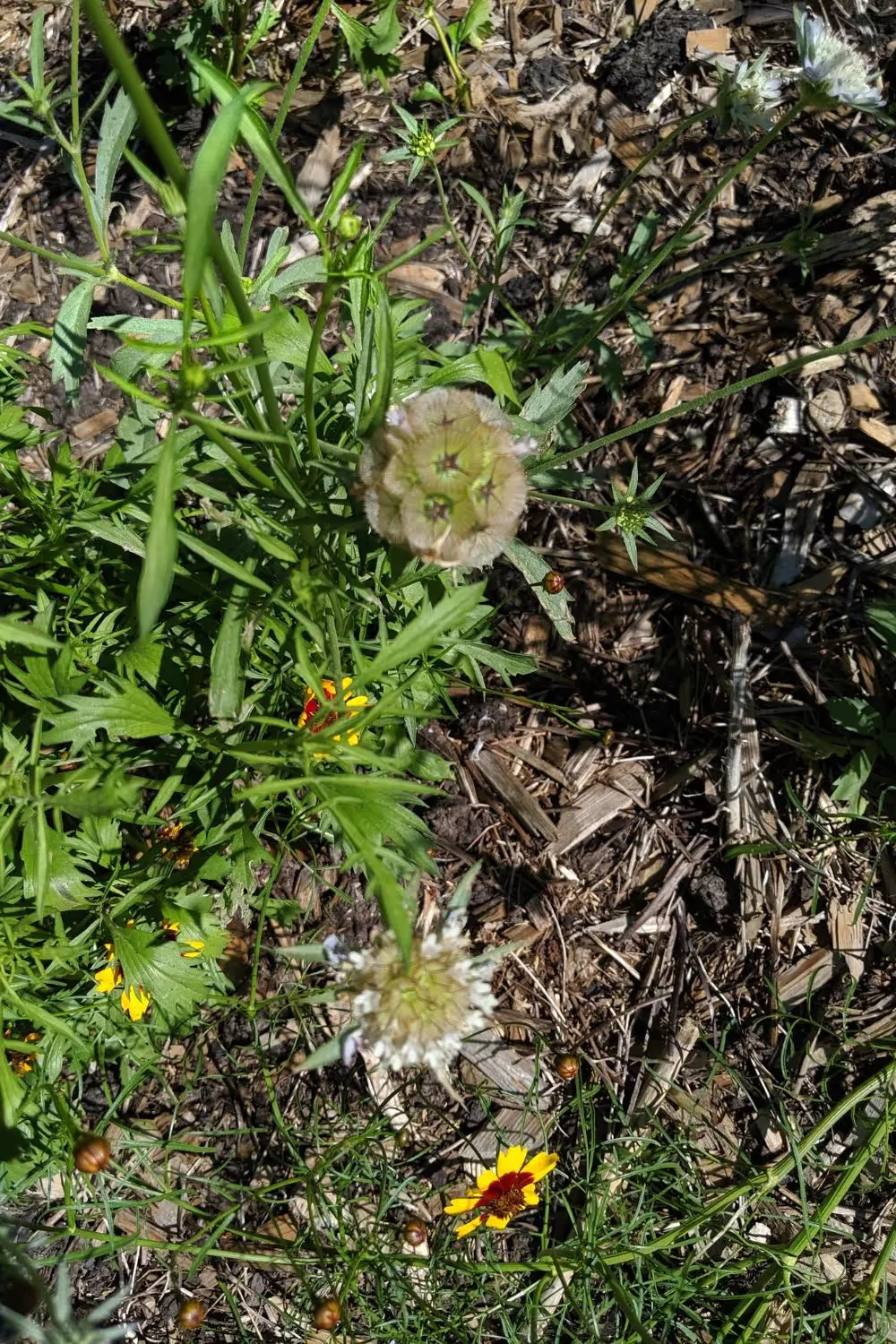
4. Seedpod Stage
Plants will turn into the geometric curiosities that you were hoping for a few weeks after the bloom appears. Harvest them on the earlier side for dried arrangements, or let them fully dry out on the stalk into the fall if saving seed.

Once Starflower has formed its seedpod, harvest the blooms with the stem attached when there has been no rain or overhead watering for 48 hours. Harvesting early in the seedpod’s development will help the longevity of the dried flower. Hang them upside down in a dry, dark place to allow them to air dry completely.
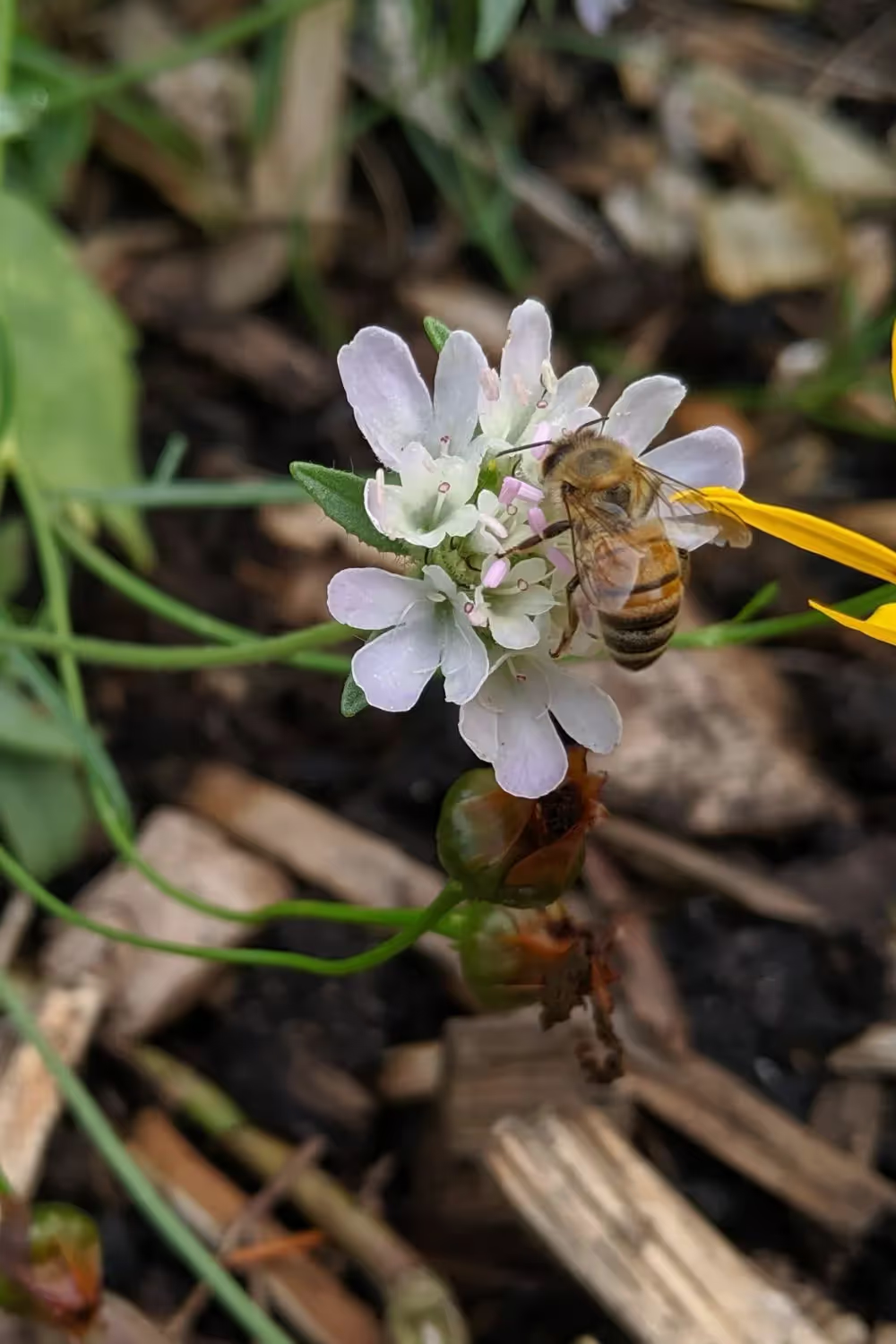
Growing and preserving Starflower Scabiosa can be a sustainable practice if done mindfully. Using organic methods and avoiding chemical pesticides helps protect the environment.
Pollinator Attraction:
These flowers are excellent for attracting bees and butterflies - take note of which insects you see gracing your scabiosa plants in your garden!
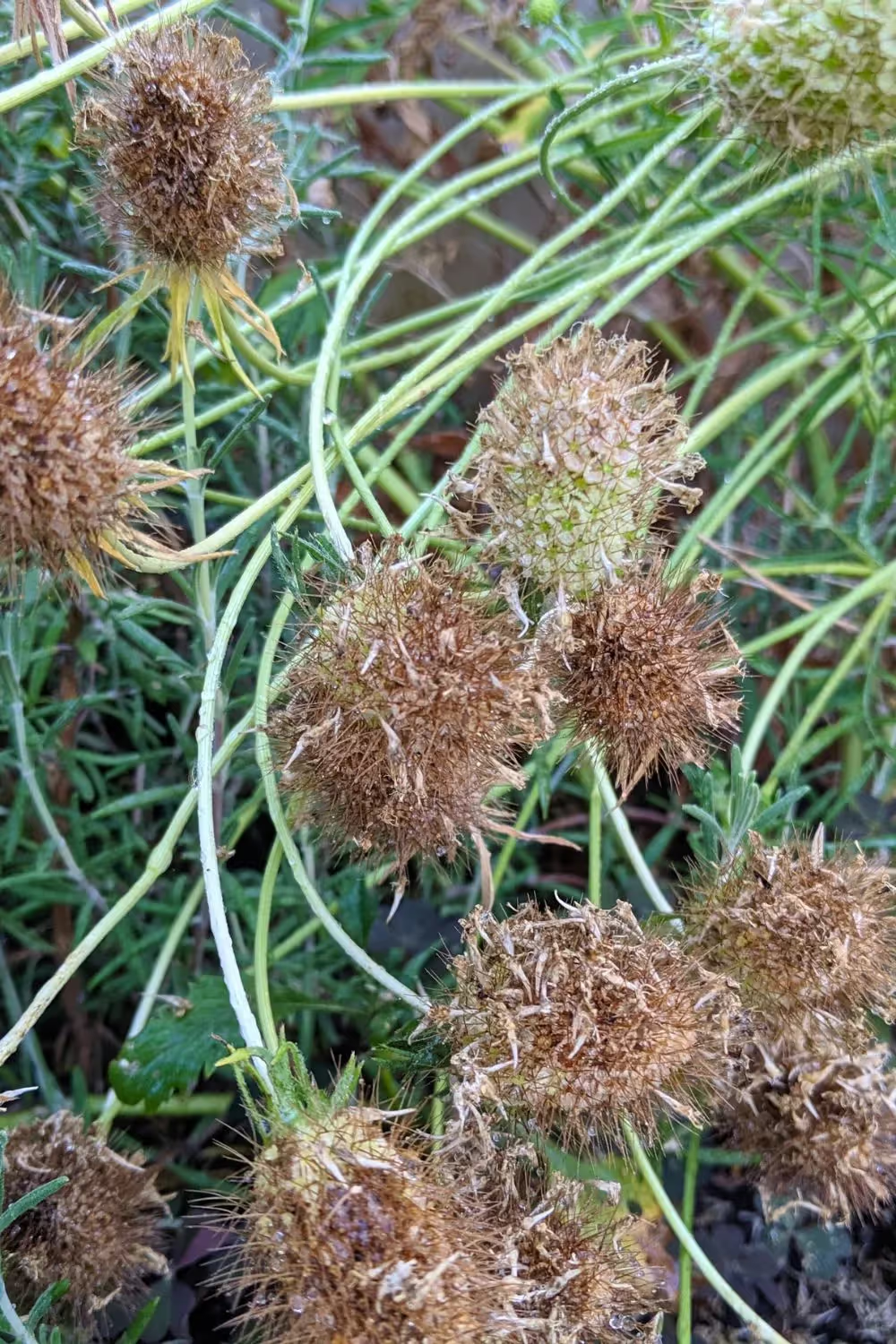
Q: Do all scabiosa flowers form the same kind of dried bloom?
A: No, just the starflower variety will do this. In the photo above, you'll see how a "Fama" cultivar dries. There are hints of the shape there, but it's not the same and is more likely to crumble.
Q: Can Scabiosa grow in containers?
A: Yes, Scabiosa can grow well in containers with proper drainage and care.
Q: How long do dried Scabiosa flowers last?
A: With proper preservation, dried Scabiosa can last for several years.
Q: Is Scabiosa a perennial or annual?
A: Scabiosa stellata is an annual, although in some warmer climates, it may come back a second year.
Q: Does Scabiosa self-seed?
A: Yes, if left to go to seed, Scabiosa can self-seed and come back the following year in zones 8-11, according to Redemption Seeds.
Q: Where can I buy seeds for Starflower Scabiosa? Everywhere is sold out.
A: They are really popular and seem to sell out fast. Here are some sources from smaller seed shops that might have it in stock:
Growing and preserving Dried Scabiosa (Starflower) is a rewarding experience that adds beauty and charm to any space. Whether you're a seasoned gardener or a beginner, this fun flower is worth the effort. I hope my personal journey and tips inspire you to try growing Scabiosa yourself!